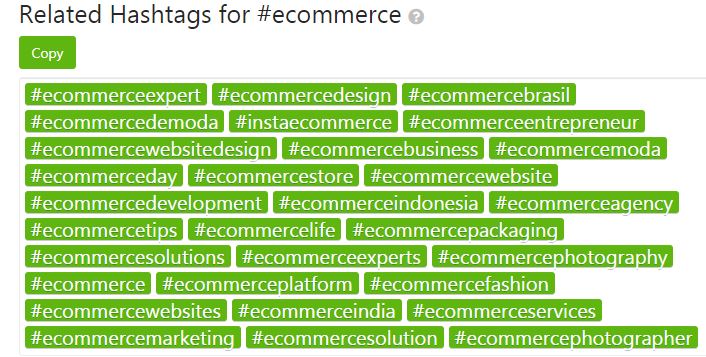There is no doubt that traditional forms of advertising are slowly being displaced by the Internet. Nowadays, the company’s social media efforts are of the greatest importance.
There is no better tool for building a loyal, engaged community. However, in order to conduct effective marketing activities in social media, it is not enough to set up a company profile on an appropriate portal.
It is also necessary to learn the rules of these channels and the media that will allow us to connect with our target group. One such distinctive form of communication is hashtags.
How to use them to promote your brand? Initially, social networks were used primarily for private purposes, as one of many modern forms of communication.
However, their popularity could not go unnoticed by marketers, who decided to use them for advertising purposes.
Social media rules
Today we can not imagine a prosperous company that would not have its own Facebook account. Other social media, such as Instagram and Twitter, are also increasingly being used.
The benefits of such solutions are many: it’s an easy way to build consumer trust and brand awareness, build an engaged and loyal community, and quickly share information and advertising content.
By creating a survey or starting a discussion, we have the opportunity to find out what customers think about our offerings. By creating attractive marketing materials, we can count on our fans to pass them on to their friends.
However, in order to use social media effectively, we need to learn the rules that govern it and learn to use its specific tools. One of them is hashtags, which allow us to increase our reach and reach the right audience.
What are hashtags?
Hashtags appeared in 2007 on Twitter. Over time, they also penetrated other portals, such as Instagram and Facebook, becoming one of the most widely used social media communication tools.
A hashtag is a word or phrase preceded by a „#” sign. Skillful use of these tags allows us to group and organize content, resulting in reaching the right target audience. Thanks to hashtags, everyone can easily find content that interests them.
For example, if we want to find all photos with flowers on Instagram, we can use the hashtag #flowers. This will show us all the posts related to the searched topic.


Such convenience also serves search engines and apps, which are able to find photos, videos or discussions on a given topic faster.
It is worth noting that although in theory the rules for using hashtags are the same for each site, in practice they are created slightly differently on each site.
How to use hashtags in social media?
As you can easily guess, hashtags can be used for both personal and professional or marketing purposes. Thanks to their skillful use, we can focus a large group of engaged audience on our profile, interested in the products we offer.
Hashtags can also enhance activities such as fundraising, social campaigns, seeking ambassadors for particular brands or organizing contests for users of specific portals. In general, hashtags are divided into several basic types.
Types of hashtags in social media:
- Content hashtags, which are those that best reflect the topic of the post, e.g. #coffee, #pizza
- Place hashtags, which help you find photos taken in specific places, e.g. #rom, #Miami
- Company hashtags, which are those created to promote brands and their activities, e.g. #ValdeMedia, #Samsung;
- Product hashtags, i.e., those used to tag photos or posts about particular products, e.g. #iphone, #galaxyS20;
- Marketing action hashtags and social campaigns, used during such activities. One of the most recognizable hashtags of this type is #metoo, a tag used in posts aimed at drawing attention to the problem of sexual harassment.
Of course, you can also use this type of hashtag for less serious topics, such as tagging activities related to an advertising campaign. There are a few basic rules to keep in mind when creating hashtags.
First: correct spelling is very important. First of all, you can’t separate the space with the „#” sign from the phrase you want our tag to be – if you do this, the tag will simply be inactive.
To make the hashtag more readable, it is a good idea to separate the individual words with capital letters, such as #MyHashtag.
How many hashtags can you add?
The most popular are those with 9 to 12. Remember that Twitter severely limits the number of characters you can use per post, so don’t use more than 2-3 hashtags per post.
If you have a local business, it’s a good idea for the hashtag to include a reference to the city. Of course, they must also relate to the profile of our business, otherwise our post will drown among landscapes and photos of buildings taken in that city, as well as content related to other local businesses.
Create a custom hashtag for your business.
We can also create hashtags related only to a particular industry. There is even a chance that other people interested in that field will also benefit from our markup, thus contributing to the promotion of our company.
In addition, it’s a good idea to use already existing hashtags that are trending at the time, which fit the topic we are covering. It is also a good idea to combine the industry with the name of our company.
Depending on the medium we use, we can modify the number and detail of the hashtags we use. Remember that good hashtags are those that are easy to remember and as original as possible.
And if we do come up with our hashtag, we need to be consistent and use it under every post.
Use hashtags and engage your fans.
When running a company fanpage, it’s always a good idea to provoke the audience to be active and involve them in promoting our business. One way to do this is to organize contests that involve posting photos of products with our company hashtag.
This way, friends or recipients of content published by our fans will have the opportunity to learn about the existence of our company and learn about its offerings.


And your engaged community can get something for themselves, which is a kind of reward for actively promoting the brand. This could include a discount, a company gadget or a free product or service.
When we create a hashtag referring to our company, it’s a good idea to think about why Internet users will want to use it. Because if we’re not paying them to advertise, why should they engage in promotional activities? One way to do this is to reference something enjoyable or trendy.
See how the biggest ones do it
Wedding hashtags are a good example. Every bride and groom look for inspiration long before the ceremony. If others tag our products in their photos of the important day, it will certainly increase our popularity.
A great example of using this method is the Jimmy Choo campaign, which introduced its own hashtag #IdoinChoo. The company asked brides who wore their shoes on their wedding day to tag their photos with this tag.
This allowed more brides to admire the beautiful wedding shoes, and surely many of them decided to purchase them.
The use of hashtags in social media – summary
Through the use of hashtags, you will reach a large group of users who previously had no idea of the existence of your company. You also have a chance that they will stay with you longer if they like your content.
Of course, not everyone will become your customer, but the more people who see our promotional materials, the better. It’s worth ensuring that we have attractive and interesting content on our profiles – this will certainly increase our chances of better earnings.

